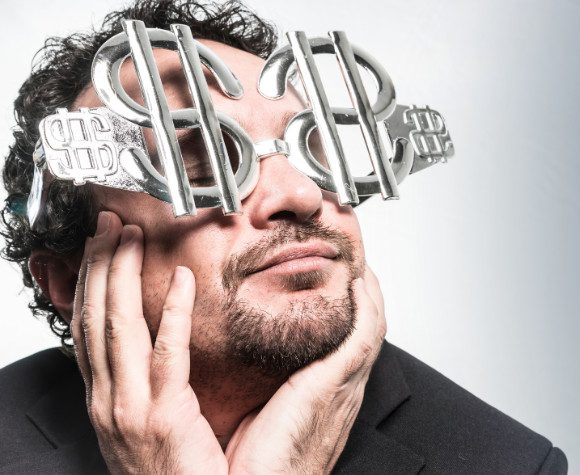Who Gets Rich When Gas and Cable Goes Up?

An article published by CNET in February showed the average price for a TV subscription and Internet was $217 per month before any taxes and fees.
I know we hear it all the time, “I pay over $200 a month for my internet and video service to ABC Cable Company.”
No doubt, that’s a lot and it has increased over the years. In addition to the increase in cost has come the increase in options from streaming services like Netflix and Disney + to live TV streaming services such as Hulu Live TV and YouTube TV.
Each comes at different price points and, depending on your selection of video services, you could see savings or you could be spending more than you did before with traditional cable services.
The Comparison
So, with my limited understanding of Economics 101, isn’t the real question we should be trying to answer, “With so many options for video, why is the traditional video service getting more expensive and not cheaper?” It must be that when you pay your bill to ABC Cable Company, they are just seeing the dollar signs and profits increase.
Not so fast.
Actually, in many cases, the opposite is happening, and cable companies have become a simple pass through of your dollars to the large broadcast companies who own the channels you watch. Imagine this being like getting gas. When the price of gas goes up, most small convenience stores also see smaller profits. Don’t believe me, check out this article on the economics of gas stations.
It’s All About Convenience
If there is no money in cable, why do companies continue to offer the service? Well, sticking with our example about gas, how many convenience stores would you utilize if they didn’t sell fuel? They are selling you the convenience of getting gas, along with the opportunity to purchase some food or drinks for your journey. It’s simple, they must sell high volumes of gas so they can get a certain percentage of customers to purchase other items to earn a profit.
Cable is very similar, and many companies continue to offer the service because some consumers still enjoy the convenience of getting their telecommunications services such as video and internet from one company. While many consumers have cut-the-cord and gone to streaming alternatives, there are still about 40 to 50 percent of Americans that still rely on a traditional cable service today. Without video, some internet companies may never get that consumer to purchase from them, just like a gas station without gas or a grocery store without milk. Not everyone wants to make multiple stops.
The Changing Landscape of Video
With all of this said, we can now understand that ABC Cable Company didn’t get rich off me paying my cable bill last month…but that still leaves the initial question. Why isn’t cable service getting less expensive with more options and competition from streaming services? So again, simple economics will help to paint this picture. At the peak of traditional cable in the early 2010’s, the cable television industry had more than 105 million paying TV households or almost 90 percent of the total TV homes according to research reviewed by Forbes.
Popular shows such as Sons of Anarchy, Burn Notice, The Walking Dead and Breaking Bad controlled most television screens throughout the decade. These shows were all aired on various cable networks including AMC, FX, and others. Those networks each owned by a large media group that had contracts with various cable companies which were receiving monthly revenue for each of the 105 million consumers that subscribe to pay TV service from the respective cable companies.
Fast forward to 2024 and estimated reports show less than 60 million Americans now have a pay TV subscription.
The Shrinking Profit Margin
In simple terms, if ABC Cable Company paid $1 per channel, then AMC, FX and others would have made $105 million each month in 2010 and would now only be making $60 million per month for those same channels. Now, those same networks are starting to either appear on other streaming services or the networks on streaming app, as this is a chance to make up some of the revenue. But, these are services that are still growing and don’t have the millions of subscribers yet to offset those lost from cord cutting.
Also, many of these services may be sold cheaper today to grow the service, so again the only place to try to get back some of the money is to continue to increase the rates that are being charge for the traditional video channels that the remaining 50-ish million pay TV providers are paying for each month.
Our Commitment to Members
So, ABC Cable Company didn’t get rich on any of these increases and probably even offset some of the increases, so they continue to have even less or no margins on traditional video. But to serve members, cable companies like HTC will continue to provide traditional video as an option for those members that so choose to have this service. HTC will also educate members on the other alternatives that may be better options to serve their viewing needs.
To close, here is a statement from HTC on video:
HTC fully understands how many consumers watch television or access video content is changing. As video delivery evolves, streaming services are becoming a more popular way for consumers to access the content they want to watch. At HTC, our mission is to serve the needs of our members by providing a quality service at a fair price. We also believe it is valuable and right to provide our members with education on alternative product options that may better serve their needs. Sharing this education does not mean that HTC is opting out of providing a valuable video product with HTC TV MAX, but instead offering education to our members on various alternatives for video delivery to help them make the best choice based on their viewing habits, budget, and convenience. No matter what option a member chooses, HTC will continue to provide strong, reliable internet service to meet the video viewing needs with HTC TV MAX or other streaming platforms.
